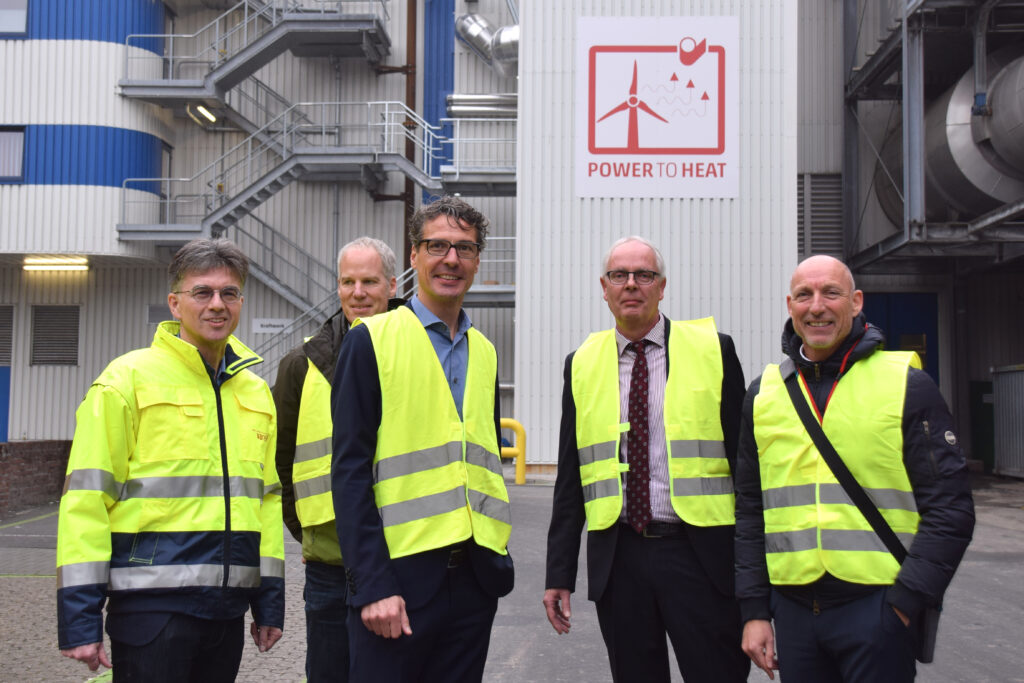PKV tests climate protection module: Wind power generates steam for paper machines
Clean wind power is an important building block on the way to CO2 neutrality for our society – but what if there is too much power in the grid? The Papier- und Kartonfabrik Varel (PKV) is now testing a module that can use wind power peaks to generate steam for paper production.

Varel. When the climate protection module provides steam for the paper machines, this in turn saves natural gas in PKV’s own power plant and avoids CO2 emissions. In addition, the electricity only has to be transported short distances because our region often generates wind power in abundance. The underlying “power-to-heat” technology and initial experience with this climate protection module as part of the enera project have now been presented by PKV shareholder Kristian Evers and EWE Board Member for Sales Michael Heidkamp in Varel.
The background to the initiative is PKV’s ambition to produce completely CO2-neutral in the long term. As part of its current strategy program, the company is investing heavily in the energy efficiency of its plants, among other things. The energy used per tonne of paper is expected to fall by 23 percent in the coming years. A further modernization of the already highly efficient power plant is also scheduled for 2020 – 92 percent of the energy source natural gas is already converted into usable steam and electricity here today. In comparison, coal-fired power plants remain below 50 percent energy utilization.
PKV has now expanded these and other initiatives (including the use of biogas and solar power) to include a power-to-heat module. As part of the enera joint project, the mill is testing how surplus electricity can be quickly and easily converted into steam, which the paper machines need to dry the paper web.
Every ton of steam generated by electricity from the power plant or from the grid ultimately saves natural gas and thus CO2. The module is capable of converting electricity from PKV’s own power plant as well as from EWE’s power grid. This closes the circle: if there is a particularly large amount of green electricity in the grid on windy days, a consumer such as the power-to-heat module can flexibly take over electricity quantities and thus make them directly usable in the region.
“We see this proven and uncomplicated technology as another important milestone on the way to producing CO2-neutral once in the future,” says PKV shareholder Kristian Evers. “Of course, this requires many other milestones – solar energy and biogas, green hydrogen and the right legal frameworks that give room for the energy transition. But we’re determined to do it.”
“The energy transition concerns us all, and everyone can make their contribution. However, it presents us with challenges without question. One of these is to avoid grid overloads caused by electricity surpluses, or in other words: it is increasingly necessary to intelligently balance electricity supply and demand. This is exactly what the paper and board mill and EWE are demonstrating with the power-to-heat module,” says Michael Heidkamp.